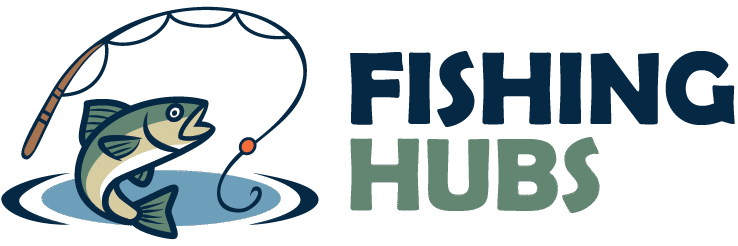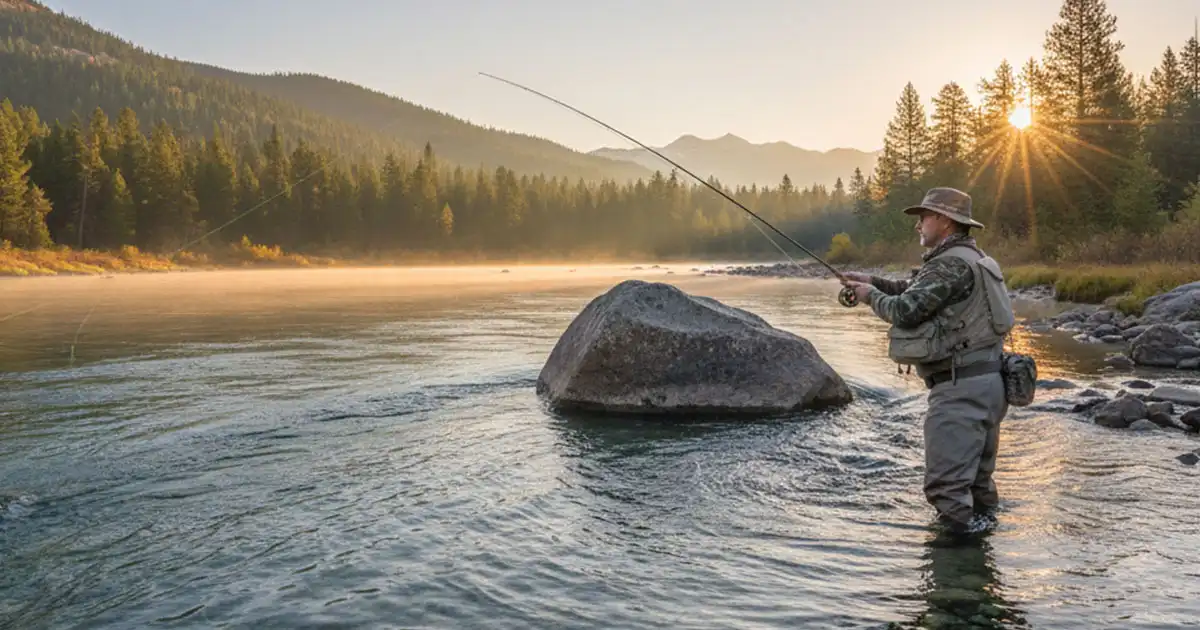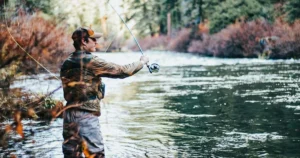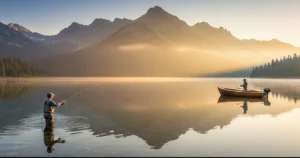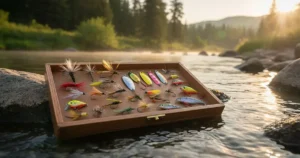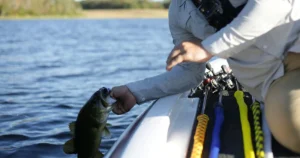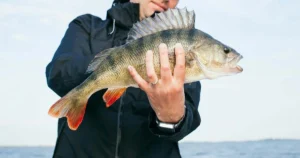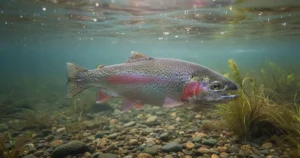The Seasons: When to Find Trout at Their Best
Table of Contents
Each season presents a unique opportunity and a set of challenges for trout fishing. As a savvy angler, you’ll need to adapt your approach to match the conditions.
Spring: The Hungry Season
Spring is arguably the best time to fish for trout. After a long, cold winter, trout are hungry and actively looking for food. The water temperature is rising, and insect hatches are becoming more frequent, which means the fish are on the move and feeding aggressively.
- Optimal Conditions: Look for days with stable, rising water temperatures. The period just after the snowmelt, when the water is still cool but not frigid, is often the most productive.
- What to Expect: You’ll find trout in a variety of locations, from slower pools to faster riffles. Their aggressive feeding behavior makes them more willing to strike a wide range of baits and lures. This is a great time to experiment with different techniques.
Summer: The Challenge of Warm Water
Summer trout fishing can be more challenging, but it’s far from impossible. As water temperatures rise, trout become less active and seek out cooler, more oxygenated water.
- Optimal Conditions: Focus your efforts on the coolest parts of the day: early morning and late evening. During the heat of the day, trout will retreat to deeper pools, shady areas, and the mouths of cool tributaries. Overcast days can also be very productive as they prevent the water from getting too warm.
- What to Expect: The key to summer success is finding the fish’s comfort zone. Use a thermometer to check the water temperature. If it’s above 65°F, consider moving upstream to higher elevations where the water is naturally cooler.
Fall: The Pre-Winter Feeding Frenzy
Fall is another fantastic time for trout fishing. The air and water temperatures are dropping, and trout are once again entering a period of aggressive feeding to bulk up for the winter. This is also when many species, like brown trout, begin to spawn, making them particularly active.
- Optimal Conditions: The cooler, crisp days of fall, especially after a cold front, are ideal. The water is clear and the hatches of insects are still abundant.
- What to Expect: You’ll find trout actively feeding in riffles and runs. They are less wary than they were in the summer, and you can often get closer to them without spooking them.
Winter: A Test of Patience
Winter fishing can be tough, but it’s a rewarding challenge for the dedicated angler. Trout are less active in the cold water, and their metabolism has slowed down. They are holding in deep, slow-moving pools to conserve energy.
- Optimal Conditions: The warmest part of the day, usually from midday to late afternoon, is your best bet. Look for days with full sun to help warm the water slightly.
- What to Expect: You’ll need to slow down your presentation. A slow, subtle drift with a nymph or a piece of bait is often more effective than an aggressive lure. Patience is your most important tool during the winter.
The Time of Day: Hitting the Water at the Right Moment
Beyond the seasons, the specific time you choose to cast your line can make all the difference. Trout feed when the conditions are most favorable, and that often means during periods of low light.
Morning: The Early Bird Catches the Trout
Early morning, from dawn until a few hours after sunrise, is one of the most productive times to fish. The water is at its coolest and most oxygenated, and trout are actively feeding after a night of rest. This is particularly true during the summer months.
Evening: The Golden Hour
The hours leading up to and just after sunset are also prime time. As the sun dips below the horizon, the light becomes softer, and the water begins to cool. This triggers a feeding period for trout, and you’ll often see a flurry of activity, especially with rising fish.
Midday: The Sunny Slump
Unless it’s a cold, overcast day, midday is generally the least productive time to fish. The bright sun can make trout feel exposed, and the water temperature often rises, causing them to retreat to deeper, shadier water. If you do fish during the middle of the day, focus on deep pools and areas with plenty of cover.
“The most important factor in trout fishing is the water temperature. The fish are cold-blooded, and their body temperature reflects the temperature of the water they’re in. Find the right temperature, and you’ll find the fish.”
Key Takeaways
- Spring and Fall are the most productive seasons due to active feeding behavior.
- Summer fishing is best in the early morning and late evening or on overcast days.
- Winter requires patience and a slower approach during the warmest part of the day.
- Water temperature is a critical factor. Always check the temperature to locate trout.
Rivers and Streams: Mastering Moving Water
Trout fishing in moving water is an art form. The current dictates where fish will hold and how you need to present your bait or lure. The best time to fish for trout in a river or stream isn’t just about the clock; it’s about understanding the current and the trout’s behavior within it.
Finding the Fish: Reading the Water
Trout use the current to their advantage, often holding in places where they can expend minimal energy while still having easy access to food. Look for these key locations:
- Pocket Water: The calm areas behind large rocks, boulders, or fallen trees. The current is broken, providing a perfect resting spot.
- Seams: The line where a fast current meets a slower one. These are prime feeding lanes.
- Deep Pools: Slower, deeper areas where trout can retreat and find cover. These are particularly good spots in the winter and during the heat of the summer.
- Undercut Banks: Areas where the current has eroded the riverbank. This creates a natural overhang that offers excellent protection and shade.
River Techniques
Once you’ve located a promising spot, it’s time to apply the right technique.
- Drifting: This is the most natural presentation for moving water. Whether you’re using bait, a nymph, or a dry fly, you want your offering to drift with the current as if it were a natural food source.
- Casting Upstream: Cast your line slightly upstream from where you think the trout are holding. This allows your lure or bait to drift down naturally towards the fish, without your line spooking them.
- Mending the Line: This fly fishing technique involves “mending” the line—flipping it upstream—to prevent drag and ensure a truly natural drift. This is a subtle but incredibly effective skill.
A good fishing pole is essential for these techniques. For river and stream fishing, a lighter rod with a sensitive tip will give you the control you need. You’ll want to look for the best fishing poles that offer a good balance of sensitivity and power. The best beginner fishing rod for river trout would be a medium-light spinning rod, as it’s versatile and easy to use.
Conclusion
Understanding the best time to fish for trout is a critical component of becoming a successful angler. By paying close attention to the seasons, the time of day, and the specific conditions of the water you’re fishing, you can dramatically increase your chances of a great catch. The most successful anglers are those who are patient, observant, and willing to adapt to the ever-changing environment. Now that you have the knowledge, it’s time to put it to the test.
